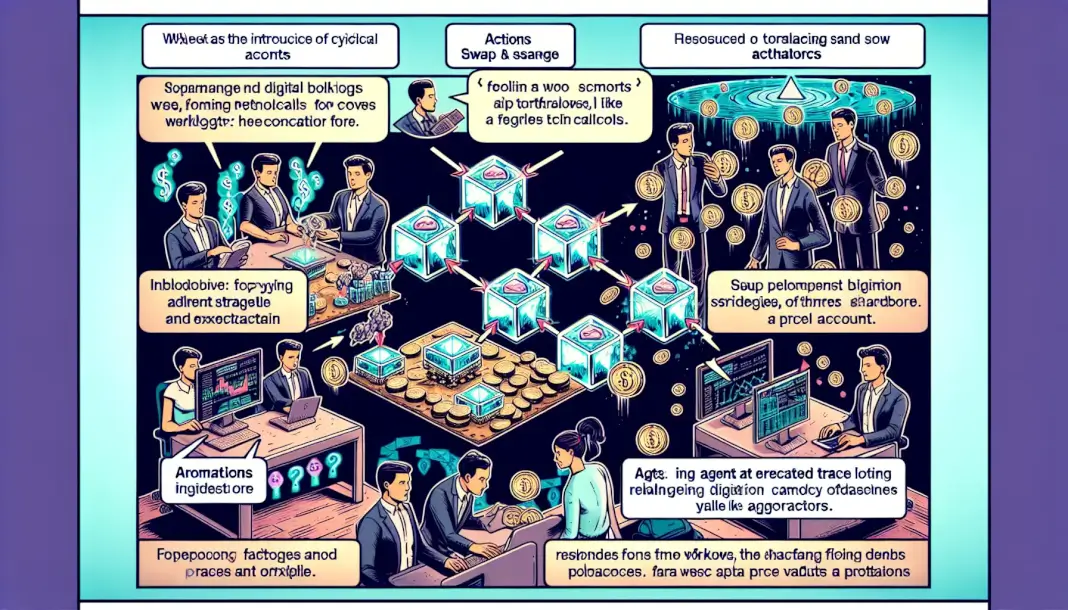KEY TAKEAWAYS
- The Forte upgrade on the Flow network introduces Actions and Agents to enhance composability and automation, allowing developers to create reusable workflows with onchain triggers.
- Flow Actions serve as protocol-native operations that form the foundation for complex workflows, enabling seamless integration across multiple protocols without rewrites.
- Flow Agents provide onchain automation by executing pre-composed transactions in response to native triggers, eliminating the need for offchain infrastructure and reducing associated risks.
Launching this October, the Forte upgrade on the Flow network aims to enhance composability and automation by introducing two new primitives: Actions and Agents. These features are designed to allow developers to create reusable, protocol-agnostic workflows with onchain time-based triggers, eliminating the need for repetitive glue code or reliance on offchain infrastructure.
Flow Actions: Building Blocks for Onchain Finance
Flow Actions are protocol-native, composable operations that include swap, source, sink, flasher, and price oracle. Each action is designed to perform a specific function effectively, forming the foundation for multi-step workflows such as yield strategies, payment flows, and swap aggregators. These actions follow a shared standard, enabling developers to compose behavior from modular components executed in a single atomic transaction.
This approach creates a “LEGO Blocks” framework for onchain finance, inspired by Unix piping. New protocols can integrate by implementing a connector, without requiring rewrites. This integration allows for seamless execution of complex workflows across multiple protocols.
Flow Agents: Automation Onchain
Flow Agents are onchain resources that operate entirely within a Flow account, without pooled funds, offchain logic, or relayers. Agents respond to native triggers such as signed or scheduled transactions, executing pre-composed transactions automatically. This enables secure, programmable, and self-owned automated behavior.
For example, an agent could rebalance stables and yield vaults across multiple protocols every Friday or route swap fees to a vault for yield farming and rebalancing, all without user intervention. This automation runs fully onchain, eliminating the need for backend systems or cron jobs.
Flow Agents provide a more efficient and effective automation layer compared to offchain services, reducing risks related to state changes, custody, and miner extractable value (MEV). This advancement allows accounts to function as autonomous engines with their own operating systems for trustless execution.
For more details on the Forte upgrade, visit the official announcement here.
Why This Matters: Impact, Industry Trends & Expert Insights
The Flow network’s upcoming Forte upgrade introduces Actions and Agents, enhancing composability and automation for developers. These features aim to streamline onchain operations and reduce reliance on offchain infrastructure.
According to a blockchain trend report, there is a significant focus on permissionless composability and cross-chain interoperability in 2025. This aligns with the Forte upgrade, as it enhances composability, allowing developers to create more integrated and efficient DeFi strategies.
As per insights from a crypto forecast report, onchain automation is being transformed by AI integration, enabling autonomous and secure operations. This supports the Forte upgrade’s impact by enhancing the automation capabilities of the Flow network, potentially increasing its adoption and efficiency in decentralized finance.
Explore More News:
Disclaimer: The views expressed in this article are those of the authors and do not necessarily reflect the official policy of CoinsHolder. Content, including that generated with the help of AI, is for informational purposes only and is not intended as legal, financial, or professional advice. Readers should do their research before taking any actions related to the company and carry full responsibility for their decisions.

